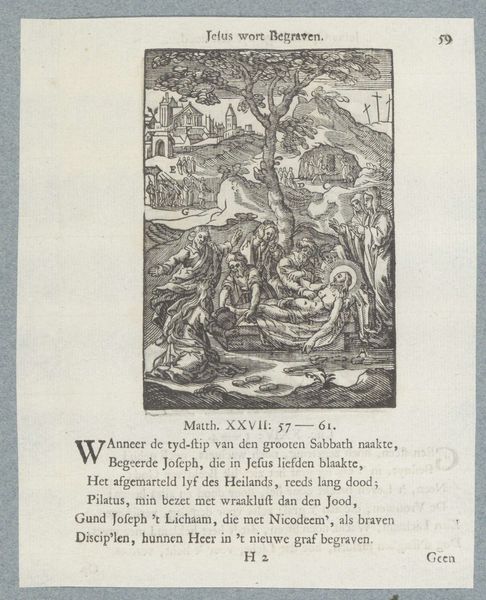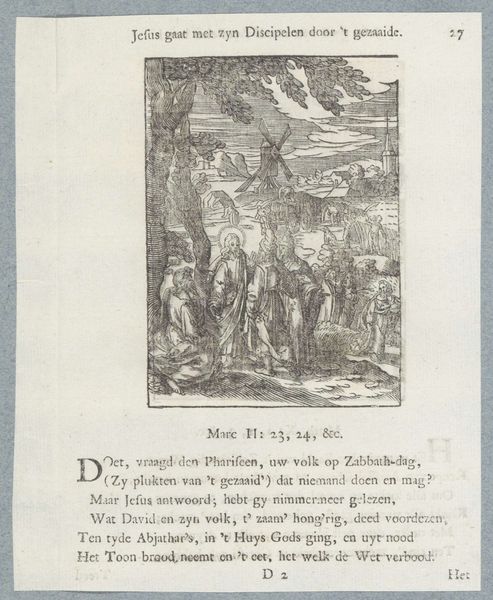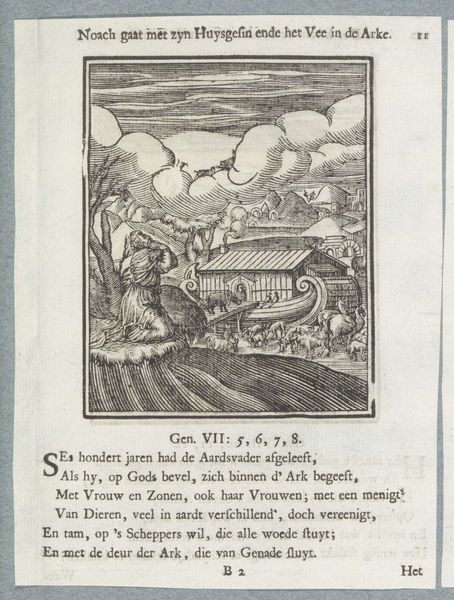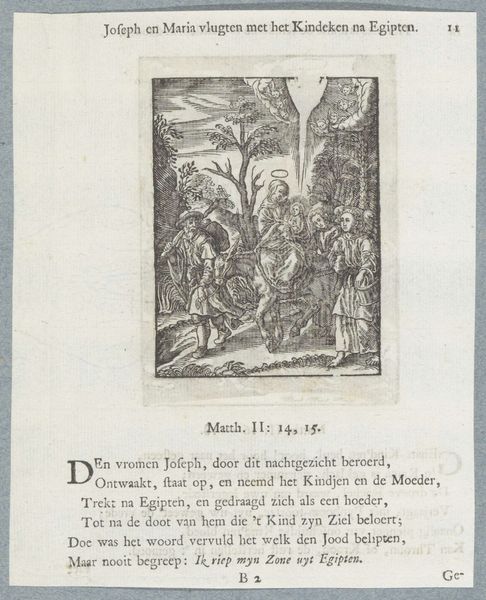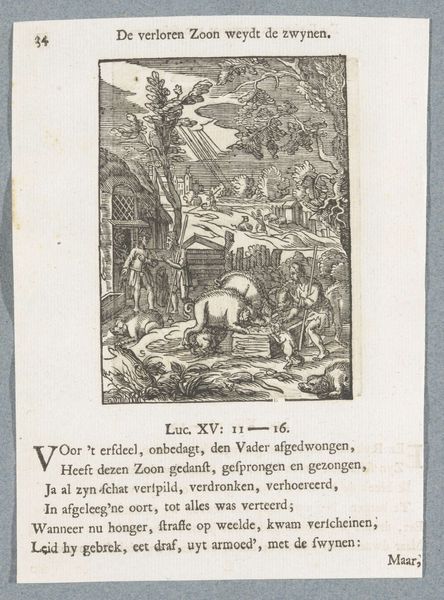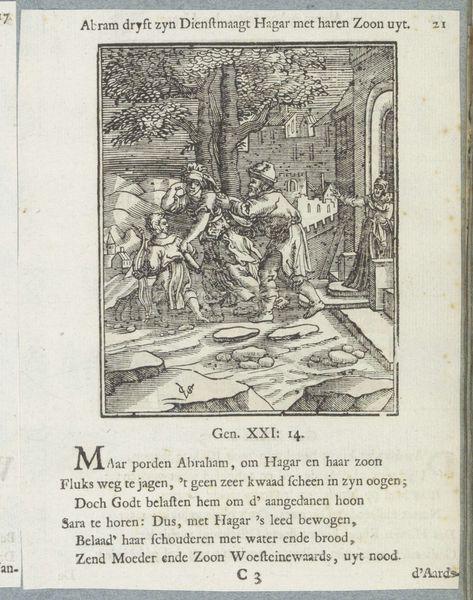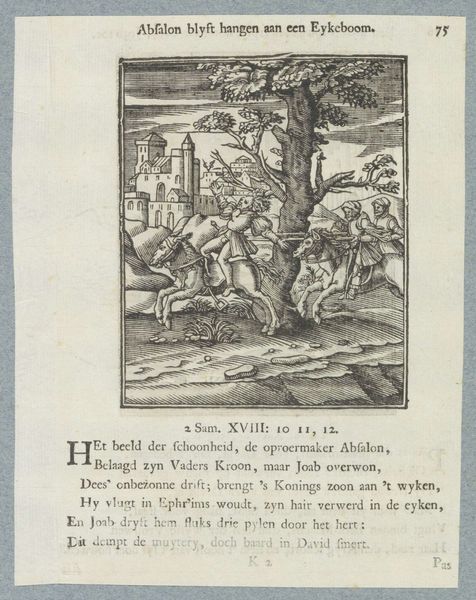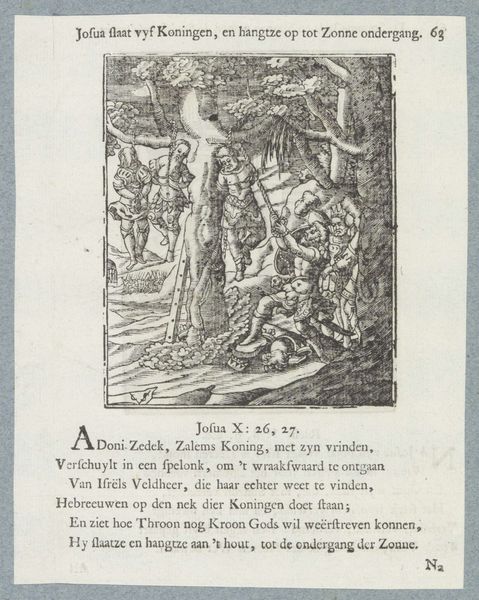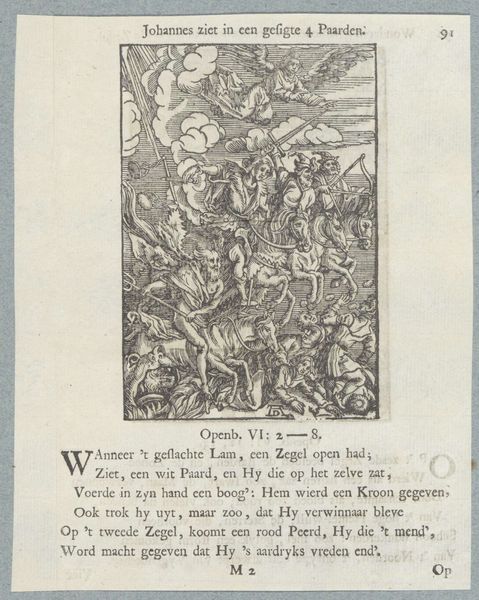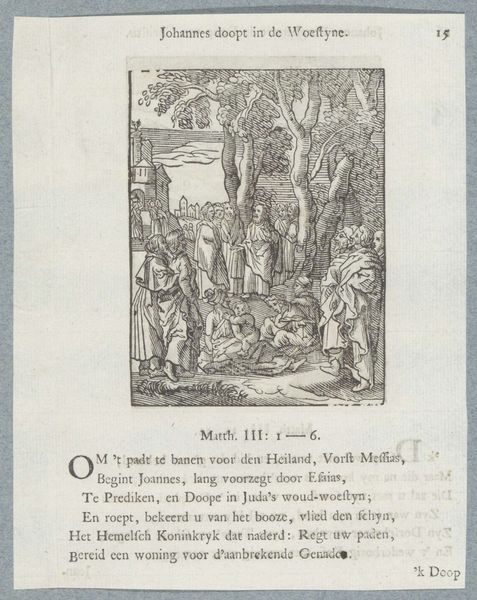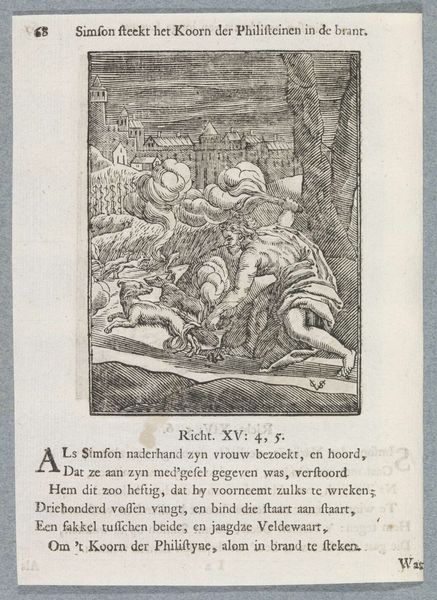
print, engraving
#
aged paper
#
page thumbnail
# print
#
sketch book
#
traditional media
#
landscape
#
personal sketchbook
#
journal
#
sketchbook drawing
#
history-painting
#
storyboard and sketchbook work
#
northern-renaissance
#
sketchbook art
#
word imagery
#
engraving
Dimensions: height 102 mm, width 75 mm, height 167 mm, width 134 mm
Copyright: Rijks Museum: Open Domain
Curator: What a beautifully rendered scene. We’re looking at “Christus vertelt de parabel van de zaaier,” or Christ Telling the Parable of the Sower, an engraving attributed to Christoffel van Sichem II, dating sometime between 1629 and 1740. It's currently housed at the Rijksmuseum. Editor: It has such a wonderfully strange, unsettling atmosphere! The whole scene feels very small, like a miniature stage. I notice the dense thicket of trees contrasted with the stark clarity of the figures...it gives an unsettling sense of theatricality. Curator: Absolutely, there’s a distinct theatrical quality to it. The engraving depicts Jesus, surrounded by listeners, narrating the famous parable. But the broader historical context here is important; this image served as a visual aid, used to interpret the Biblical text and instill particular virtues or doctrines in the viewer. Think of this print in a larger context of religious instructional images. Editor: That context is essential, yes, but stepping back… It's really interesting to consider the tension here between instruction and genuine faith. It’s all happening under this brooding canopy, while everything below seems hard, barren almost, matching the story. The story being read visually, is quite clever. Does this suggest that good intentions can land in all different ways? Curator: Exactly! The parable itself, of course, deals with how the sower’s seeds fall on different types of ground – some fertile, some barren, some devoured by birds. And those outcomes symbolize how people receive the word of God – the seeds sown here. This particular interpretation, framed as it is, highlights anxieties regarding faith, the pitfalls of easy belief, even... it is an object that can and maybe *should* raise anxieties. Editor: That kind of didactic approach can often miss the spark of something deeply felt, though, right? Turning faith into a set of rules, versus the wonder it can invoke… Though maybe in some cases, anxieties, fear of failure and a need to conform works for an image intended for broad viewership, it seems that at this period the role of fear was just as valid a strategy of control as was adoration or belonging. Curator: Indeed. The success, or perhaps even failure, of images such as these is embedded in the shifting social contexts they moved through during a politically fractured period. Editor: Well, looking at it now, knowing the background... it definitely shifts my understanding. So much history, pressed into this tiny, potent scene! Curator: A testament to how even a simple print can open up a world of theological and political interpretations.
Comments
No comments
Be the first to comment and join the conversation on the ultimate creative platform.
